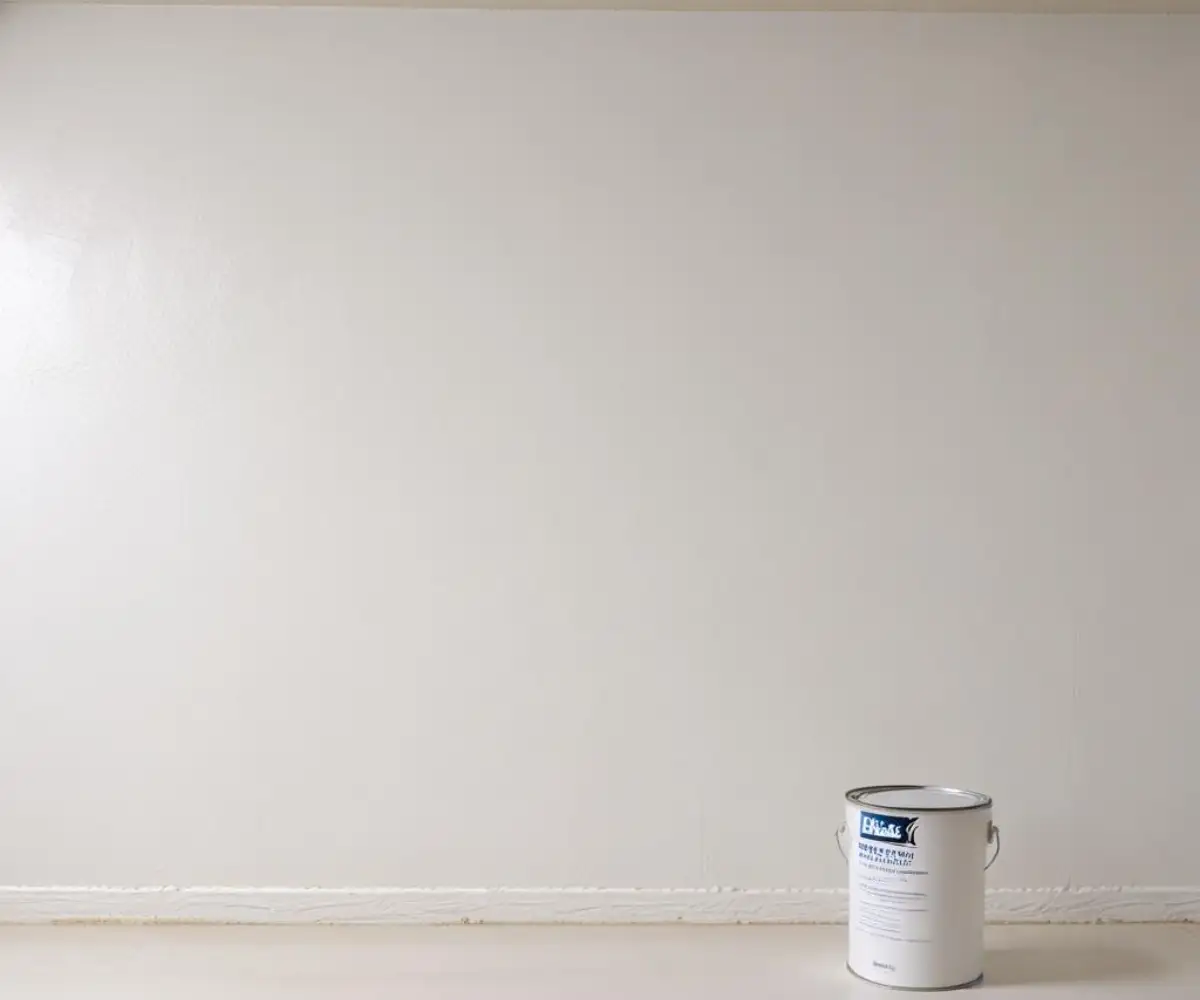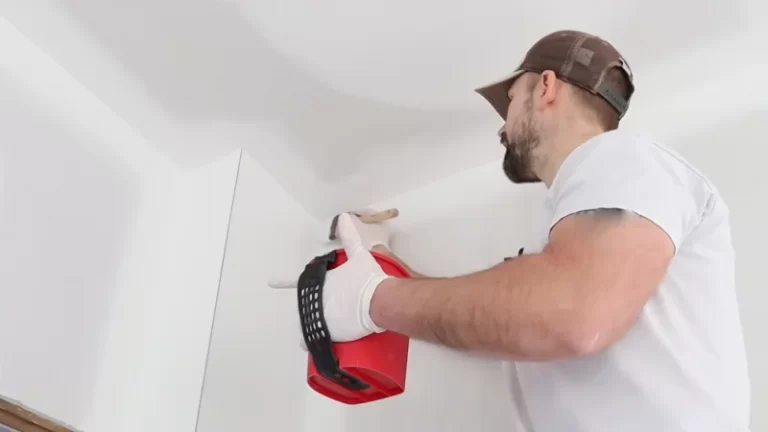Can You Use DRYLOK on Drywall? The Surprising Truth
Homeowners battling damp basements or humid rooms often reach for a familiar can: DRYLOK. Known for its robust waterproofing capabilities on masonry and concrete, a critical question frequently arises: can you use this same powerful solution on interior drywall? The answer is a conditional yes, but applying it without understanding the risks can turn a simple paint job into a disastrous moisture trap.
Using DRYLOK on drywall is not a simple DIY task; it’s a specific solution for a very specific problem. If done incorrectly, you risk trapping water, leading to peeling paint, soggy drywall, and a perfect environment for mold. This guide will walk you through the essential steps, critical warnings, and proper techniques to ensure you’re solving a moisture problem, not creating a bigger one.
You'll Learn About
Understanding DRYLOK: More Than Just Paint
Before applying DRYLOK to any surface, it’s vital to understand what it is and how it works. Unlike standard latex or acrylic paints that simply form a film on the surface, DRYLOK is a heavy-bodied, cementitious waterproofer. Its formula is designed to penetrate the microscopic pores of masonry and concrete, expanding as it dries to form a thick, watertight barrier that can withstand significant water pressure.
This is why it’s the go-to choice for basement walls, foundations, and retaining walls. However, these same properties make its application on drywall a more complex issue. Drywall, made of gypsum plaster pressed between two thick sheets of paper, does not have the same porous structure as concrete and is highly susceptible to damage from moisture.
The Core Question: Is DRYLOK on Drywall a Good Idea?
So, can you use it on drywall? Yes, but only if you address the source of the moisture first and meticulously prepare the surface. Applying DRYLOK to drywall without these crucial preliminary steps is a recipe for failure. The primary danger lies in its low breathability. If water is seeping through the foundation and into the wall cavity behind the drywall, DRYLOK will block its path to the interior, trapping it within the wall.
This trapped moisture will saturate the drywall from behind, turning it into a soft, mushy mess. The water pressure can cause the DRYLOK to blister and peel, and the damp, dark wall cavity becomes a breeding ground for mold. You can’t just hide a water issue; you must solve it at its root. If you’re seeing signs of mold, it’s important not to just cover it up, as deeper problems with DRYLOK and mold can arise if not properly remediated.
When You SHOULD Consider Using DRYLOK on Drywall
Despite the warnings, there are specific scenarios where DRYLOK can be an effective solution for drywall:
- Minor Dampness on Masonry-Backed Drywall: In a basement where drywall is installed directly over a concrete or cinder block foundation wall, DRYLOK can be used to manage minor, intermittent dampness that seeps through the masonry.
- High-Humidity Areas: In rooms like laundry areas or basements prone to high ambient humidity, a properly primed drywall surface can be coated with DRYLOK to prevent surface moisture absorption.
- Creating a Consistent Finish: If you have a basement with both exposed masonry walls and drywall sections, using DRYLOK on both can create a uniform, textured finish throughout the space.
When You SHOULD NOT Use DRYLOK on Drywall
It is crucial to avoid DRYLOK in the following situations, as it will likely cause more harm than good:
- Active Water Leaks: If you have a known leak from a pipe, foundation crack, or poor exterior grading, DRYLOK is not a solution. It is a waterproofer, not a sealant for active leaks.
- Already Damp or Damaged Drywall: Never apply DRYLOK over drywall that is already soft, damp, or shows visible signs of mold or water stains. The underlying issue must be resolved, and the damaged drywall should be replaced.
- Standard Interior Rooms: For rooms without specific moisture issues, like bedrooms or living rooms, DRYLOK is unnecessary and its textured finish is generally not desirable. A standard high-quality paint is the better choice.
Step-by-Step Guide: How to Safely Apply DRYLOK to Drywall
If your situation fits the criteria for using DRYLOK on drywall, success hinges on meticulous preparation and application. Rushing this process will almost certainly lead to failure. Follow these steps precisely to ensure a durable, effective result.
Step 1: Find and Eliminate the Water Source
This is the most important step. Before you even think about opening a can of DRYLOK, you must identify and repair the root cause of the moisture. Inspect the exterior of your home for overflowing gutters, downspouts emptying too close to the foundation, and improper ground sloping. Check for interior sources like plumbing leaks or condensation. Sometimes, hidden issues like an open sewer pipe in the basement can contribute to overall moisture levels.
Step 2: Prepare the Drywall Surface
The drywall must be perfectly clean, dry, and sound. Use a wire brush to remove any loose dust, dirt, or peeling paint. Repair any cracks, holes, or dents with joint compound, then sand the repairs smooth once they are fully cured. Ensure the drywall is completely dry; a moisture meter can provide an accurate reading if you are unsure.

Step 3: Prime the Drywall (Do Not Skip This Step)
Applying DRYLOK directly to bare drywall or joint compound is a common mistake that leads to adhesion failure. You must use a high-quality primer to seal the porous paper and compound, creating a uniform surface for the DRYLOK to bond to. An oil-based or shellac-based stain-blocking primer is highly recommended as it creates an excellent barrier and ensures the heavy DRYLOK coating adheres properly.
Step 4: Ensure Proper Ventilation
DRYLOK, particularly oil-based formulas, emits strong fumes. Ensure the area is well-ventilated by opening windows and using fans to circulate air. Proper ventilation is also crucial for the curing process. Maintaining good airflow in your basement can also help with other air quality issues, and if you notice your radon fan is loud when cold, it could be a sign of broader ventilation system problems that need attention.
Step 5: Apply DRYLOK Correctly
Stir the DRYLOK thoroughly before and during application. Use a 3/4″ nap roller or a stiff, heavy-duty brush to apply a thick, even coat. The goal is to work the product into the surface, filling any microscopic imperfections on the primed drywall. Follow the manufacturer’s instructions, typically applying two coats and allowing the first to dry completely before applying the second.
Potential Problems and How to Avoid Them
Even with careful application, issues can arise. The most common problems are blistering and peeling, which are almost always caused by inadequate surface prep or applying the product to a surface that wasn’t completely dry. Trapped moisture and subsequent mold growth are the result of failing to fix the underlying water source. The solution to avoiding all these problems is simple: do not take shortcuts in preparation.
Alternatives to DRYLOK for Drywall
If you determine that DRYLOK is not the right choice for your drywall, there are other effective options for managing moisture:
- Moisture-Resistant Paint: For areas with high humidity but no active leaks, such as a bathroom, a high-quality kitchen and bath paint with mildewcide is an excellent choice.
- Vapor Barriers: For a more permanent solution during construction or a major renovation, installing a polyethylene vapor barrier behind the drywall is the most effective way to stop moisture intrusion.
- Dehumidification: In many cases, simply controlling the ambient humidity with a good dehumidifier can solve basement dampness without the need for specialized coatings.
| Feature | DRYLOK Waterproofer | Standard Latex Paint |
|---|---|---|
| Waterproofing Ability | High (designed to stop water) | Low to None |
| Breathability | Very Low (can trap moisture) | High (allows moisture vapor to pass through) |
| Application | Thick, requires effort to apply | Easy, smooth application |
| Best Use Case on Drywall | Primed drywall over masonry in basements with minor dampness | General interior walls in non-wet areas |
| Surface Preparation | Extensive (must be clean, dry, and primed with an oil/shellac primer) | Standard (clean and prime if necessary) |
Frequently Asked Questions (FAQs)
Can you paint over DRYLOK on drywall?
Yes, you can paint over DRYLOK with a high-quality latex paint. However, you must wait for the DRYLOK to cure completely, which can take several days to a week or more depending on humidity. For best results, clean the DRYLOK surface first.
Does DRYLOK kill or stop mold?
No. DRYLOK is formulated to resist the growth of mold on the paint film itself, but it will not kill existing mold. Furthermore, if you apply it over a surface with a moisture problem, it can trap water and actually promote mold growth behind the coating.
How long does DRYLOK take to dry on drywall?
DRYLOK will typically be dry to the touch in a few hours, but it needs significantly more time to cure fully and form its waterproof barrier. Because it’s applied over a non-porous primer on drywall, curing times may be longer than on bare masonry. Always follow the manufacturer’s specific instructions for recoat and cure times.
The Final Verdict
Ultimately, you can use DRYLOK on drywall, but it should be viewed as a specialized tool, not an everyday paint. Its use is reserved for specific situations, primarily in basements where properly prepared drywall is situated against foundation walls with minor, manageable dampness.
The absolute, non-negotiable rule is to always fix the source of the water intrusion before applying any coating. When you prioritize solving the problem over simply covering the symptom, and when you commit to meticulous surface preparation including a proper primer, DRYLOK can be an effective part of your waterproofing strategy. When in doubt, always address the moisture first and the wall covering second.

